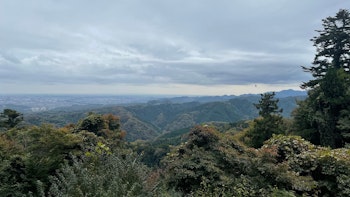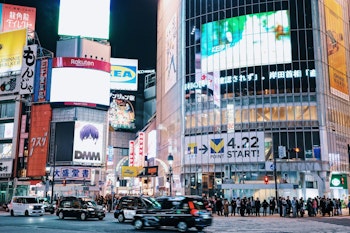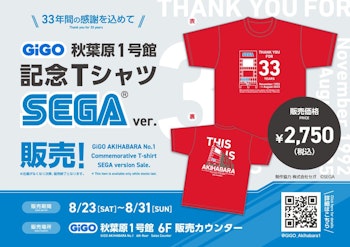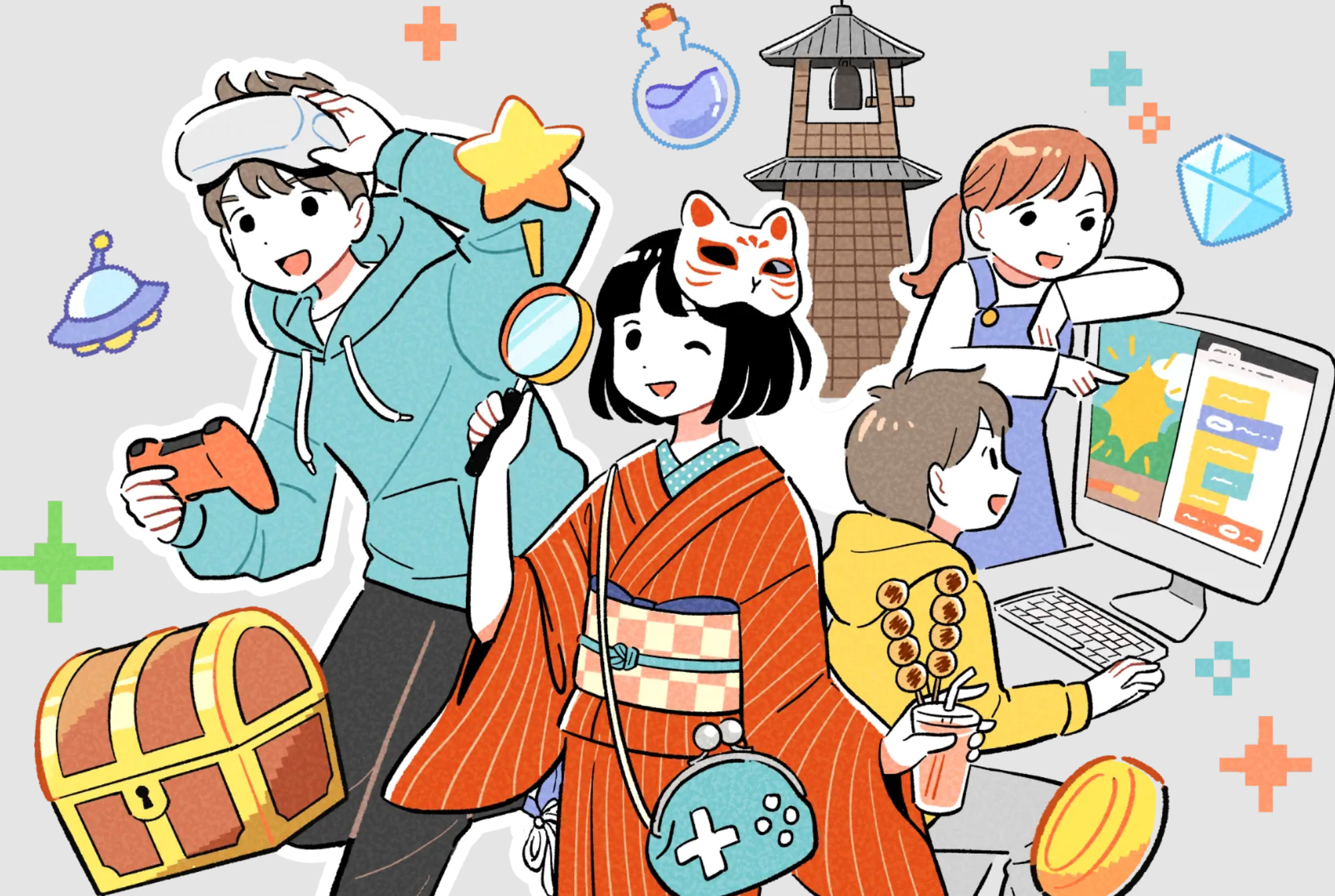
Japan has a tourism problem. Not that it can’t bring in tourists, or that it doesn’t have the space - the government has expressed they want more tourism, and the numbers visiting Japan are growing exponentially year-on-year - but that it struggles to diversify the places they visit beyond a few hotspots. People have an idea of places they want to see, and initiatives to bring people beyond Tokyo and those few major hotspots to find a country undiscovered are falling short. Can gaming, or even indie gaming, be an answer to that?
That’s what the organizers behind the inaugural Burari Kawagoe GAME DIGG (re-named Wandering around Kawagoe GAME DIGG in English) were hoping to achieve when its outdoor free-entry one-day indie and doujin gaming showcase kicked off in the retro streets of Little Edo earlier this month. The concept was simple: Japanese gaming is of growing interest around the world, regaining its prominence and success with players beyond domestic borders. People love Nintendo, after all, especially with the global success of their Nintendo Switch instigating successful expansions into film, theme parks, and a museum. Surely video games are the answer to getting people to visit lesser-traveled hotspots
If you ask tourists what they spend money on, retro games and merchandise related to the medium ranks high. This event wanted to bring tourists with this love for games to the town of Kawagoe by making a gaming event and tourist destination one and the same, inviting local businesses and landmarks to join with the event and interweave the act of discovering new titles with a sightseeing tour of the area.

Games were showcased across two central locations throughout the town, one of which is the aforementioned Little Edo. This shopping street is a perfect preservation of the narrow wooden building-lined streets of Edo-era Japan, perfectly preserved, creating a fascinating blend of old and new as this classical architecture stood hand-in-hand with modern gaming. More titles were housed on the third floor of the newly-reopened Koedo Terrace, the Taisho-era home of Saitama Resona Bank in the area until 2020 before being reimagined as a cafe, restaurant, and working space that also sells local produce and cultural items while retaining its classic exterior.
Over 50 exhibitors were at the event, both in the realm of video games and board games, from indie gaming publishers to solo hobby developers working with retro or unusual hardware. This included familiar faces at such events like room6 and PLAYISM, who brought a recognizable and tantalizing slate of already-released and upcoming titles from the maverick Japan-focused indie publishers.
These are publishers not just focused on finding the next big hit but highlighting unique projects that could only come from the country, with titles like Haruka: Beyond the Stars being a perfect example of this. Additionally, while showcasing independent of their publisher Shueisha Games, one of the biggest draws was a chance to meet the developers of Urban Myth Dissolution Center, which has proven to be one of the most viral and successful Japanese games of the first half of 2025, at least domestically. Remaining a constant in digital charts since its launch even now, the game has proven to be a big hit, with a number of people lining for the chance at their booth in the Koedo Terrace.

Of course, this wasn’t just an event to find games you’ve seen before, with plenty of new titles to discover all around the event. One game that was unique amongst those showcased at the event had to be Crazy Sonic by Hiroshi Ideno Presents. A solo project for the crank-driven Playdate hardware, this was an intense futuristic side-scrolling racing game offering speed, challenge, and hand cramps.
This was a bespoke demo created for the event, focused on introducing the world and its mechanics. In this world, a new law called the Slow Life Directive has given people the dream: no overtime, no forced work, and a chance to live as they like with the rise and fall of the sun. No one can be out at night, however, aside from select people who use the highways to protect those from danger. You are one of those people, and you have to weave past obstacles and the vehicles of those who have not yet taken up the new lifestyle to protect the city.
In doing so, you have to race through the city within the time limit to clear a level. You do so by cranking the lever as fast as you can to gain speed, while using the arrows to move up and down between lanes. While it’s easy to get moving with relatively little speed, to reach max speed of 200kmph requires intense movement that’s difficult to do while keeping a firm grip of the device that simultaneously allows you to use the arrows to dodge incoming traffic. Pulling it off, however, is incredibly satisfying, bringing a thrill to the high-speed, high stakes action.
It’s also stunning to look at, a relentless onslaught of black-and-white speedlines and frantically-passing cityscapes. There’s little quite like it to this intensity on Playdate, and anyone with the device should keep their eyes peeled.
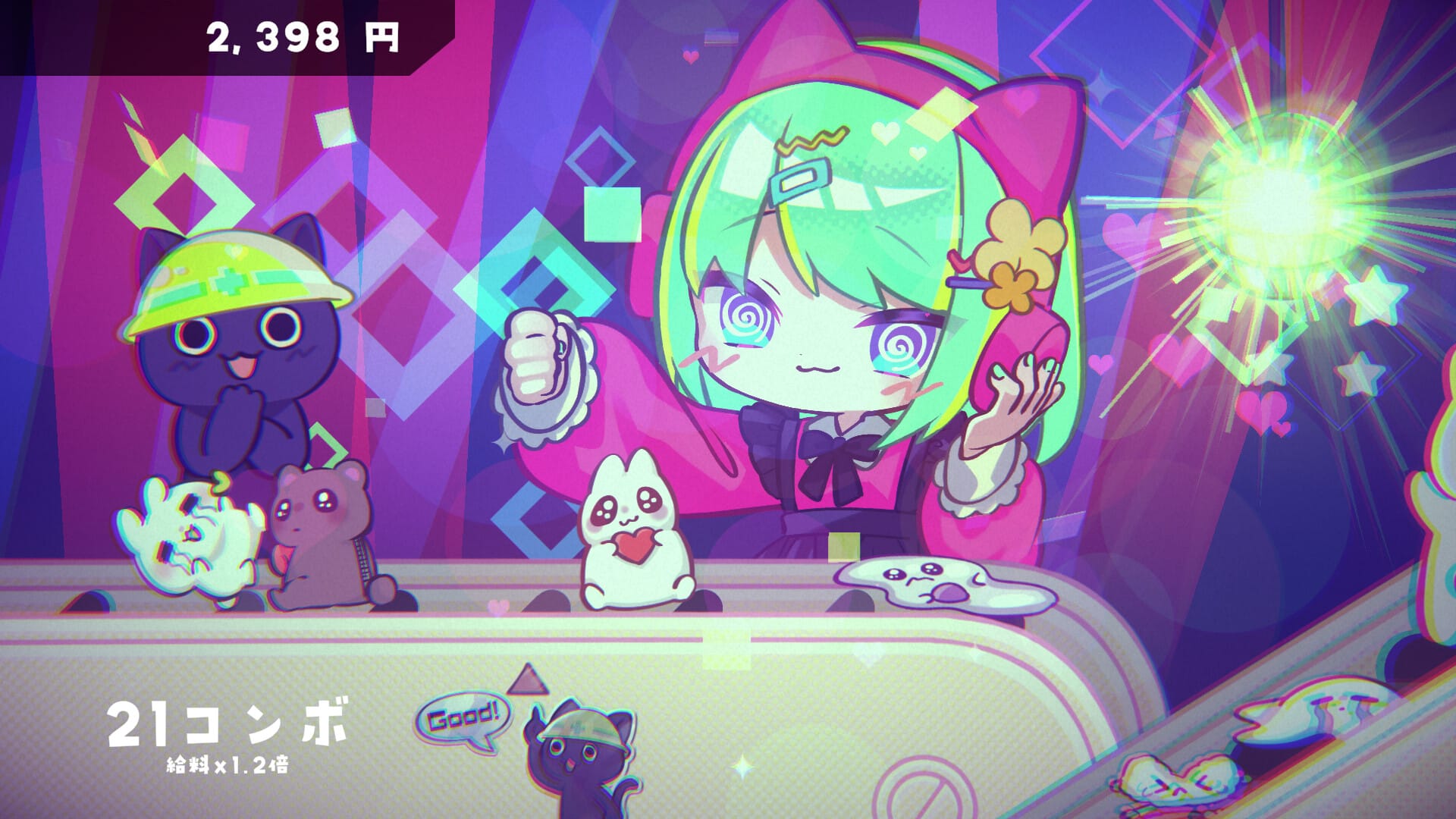
Another such title that stood out for me was Kimekyawa Genkai Beat-Chan, less a rhythm game and more a title played to the relentless rhythm of the never-ending conveyer belt with an injection of dempa culture. Beat-chan is stuck in the dead-end job of packaging items rolling by on the conveyer belt with a mind somewhere far more exciting. The more you get into the rhythm, the more money you earn to buy new rhythms, bonuses and more, with the chance to transcend the dull, lifeless factory floor for a kawaii world of rabbits and sunshine.
The music subliminally cues you into packing beat, and the monotony of this role extends to the fact that opening your phone doesn’t give you freedom from the never-ending cycle of work. It can get intense, but the energy of your transcended state and escalating intensity gives a thrill only matched by frantic visuals. The game was the result of the Unity One-Week Game Jam and since refined, with the game additionally set to be released on Steam soon.
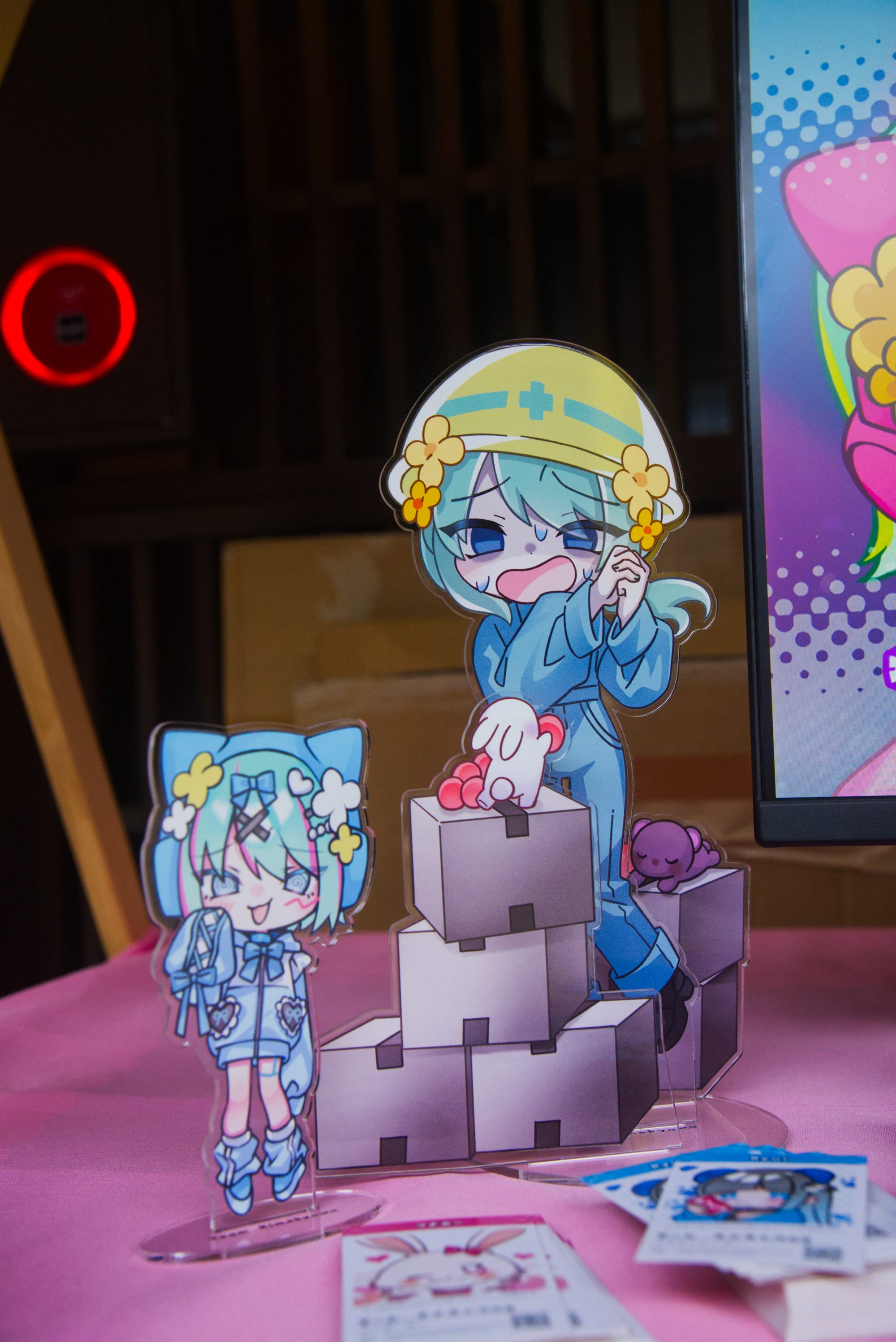
It’s the sort of game that makes these events rewarding. New demos for titles like Animaloid Girl excited, and I fell in love with BBS (Bulletin Board System) Magica last year at another doujin event in Akihabara, fascinated by its retro PC aesthetic for a game where a former magical girl must use her powers to protect the sanctity of the online forum messaging board. But smaller titles, the passion projects or experiments of creators, titles you’ve not seen before and come away loving, those are the things you uncover by chance but remind you what’s so great about attending events like this.
The event wasn’t just for visitors, seeking to involve the community and even bring younger kids into the world of game development. A game workshop for elementary schoolers produced two titles that were both young developer’s first steps into the world of creating their own games. I was one of the first visitors of the day when I met these kids, with the pair excited to share their work with me.

In one game, I challenged a ghost to hide-and-seek, and in another, I read a branching visual novel about saving the earth. They were excited to see me play and desperate to see the secrets they’d hidden in their games, as I was tricked by my young guide into a failed ending in the visual novel just so they could show me what happens when you make the wrong choice.
The joy from creating their games, which they also got to share on the event’s official livestream, was wonderful to see, and anything that brings more people to game development should be celebrated. It’s challenging, and knowing where to start, especially if young with resources targeted at such kids lacking, make it difficult for those wanting to jump from playing games with friends to making them. It’s one thing to bring people into your town to play games, but to ensure those living in that town can participate themselves is something special.
This was what made Burari Kawagoe GAME DIGG so unique. Bringing school kids into the picture, and blending this game discovery and creation with a journey into the past and into the culture of a place full of history to uncover. If you visit the official website for the event, before a list of games being showcased you’ll find an introduction to Kawagoe as a spot of cultural heritage, and there’s plenty to uncover.
Not far from Tokyo in nearby Saitama, stepping into Kawagoe is like stepping back in time. Kashiya Yokocho, next door to many of the stalls showcasing new games, houses over 70 sweet stores on both sides of its narrow streets, and even today the town is filled with traditional crafts that have been protected and passed down through generations. Kawagoe is also the home of the 370-year-old Kawagoe Matsuri, and this was an attempt to bring an out-of-season Matsuri to the city with video games.
Much was done by local officials to bring in local artists and shops to collaborate with the event. They brought in a songwriter known under the pen-name negebako to create a frustratingly-catchy and entertaining theme song for the event, also hiring them to perform a set during the day near Koedo Terrace. Similarly, cafe coetoko next to Little Edo hosted a mini concert of gaming music from Haruka: Beyond the Stars, Pastel Parade, and Undertale, repeating the performance later in the day at the Terrace.
The cafe even hosted a few special meals themed to the event and made with local produce. A postcard rally encouraged people to go beyond the event to find postcards featuring key art and original artwork for a number of titles being shown.

It all comes together to turn what is normally a few hours playing indie games in a convention hall for many showcases into a full-day adventure that encompasses an entire town. It was well-managed, with a lot of effort from local governments and sponsors to make the event accessible and cheap to creators while enticing for visitors.
The only negative aspect was outside of the control of its organizers: the weather. After beautiful sunshine for most of the week, the day itself brought relentless downpours that hindered the desire for many to wander the outdoors. This possibility had at least been considered, and tarps and natural cover in Little Edo ensured that every demo, even those situated outdoors, were shielded from the rain. But it was still cold, and far from ideal conditions to sit and stand and explore.
Even then, for all the fun of the event itself, I have to wonder if even in fairer weather this would actually succeed at boosting local tourism. Personally, this was my first time visiting Kawagoe, and I thoroughly enjoyed the experience. I didn’t do the postcard rally due to the weather leaving plenty for me to discover on a subsequent visit I will no doubt partake in in the future, and that’s clearly the goal. For me, it was a success.
I love finding, sharing and discovering Japanese doujin and indie games, and I'm a journalist who writes and researches this stuff for a living. How about the average person? Will someone with little knowledge or interest come to Kawagoe just for an event like this, or will this event have little impact on their desire to visit? How many people visited Kawagoe and participated in the local economy as a direct result of the event, and was it enough to make the months of planning and costs worth it? Would more events like it in even more remote areas ease the burden of tourism?

Just last week, a report noted an increase in anime tourism to key locations from popular series, proof tourists are beginning to step beyond typical tourist destinations if given the right motivation. For years, local governments have funded new films to improve tourism or invested in original anime set in their prefecture to encourage fans to visit, so the phenomenon is nothing new. An event like this isn’t even far-flung from those efforts, either, using cultural product to bring in visitors.
A major differentiating factor between this event and initiatives like anime tourism is that such initiatives are typically more focused, utilizing a specific IP or love for a particular character or story. Very few things, Nintendo excluded, can use the nebulous concept of gaming and a broad range of stories and experiences under one umbrella to encourage tourism, in that case bringing people to the rural suburbs outside Kyoto for a day-trip.
Aside from the biggest events in the calendar such as Tokyo Game Show, where even then an expectation of heavy hitters and nostalgic favorites making an appearance exists, people rarely visit a place for the nebulous concept of gaming, never mind indie gaming, which is the supposed goal of Burari Kawagoe GAME DIGG. I have to wonder if it brought tourists to the area above a typical daily visitor count to make it a profitable investment.
Of course, that doesn’t have to be the only reason to host such an event. In terms of the way this event engaged the local community in indie gaming is a net positive. It was also, notably, an impressive showcase of Kawagoe as a town seeking to support and promote individuals and small businesses, from the renovated Koedo Terrace that boasted impressive facilities for remote work in a picturesque setting. All showcased in an event that signaled the government’s intent to support those with a desire to create. Perhaps that could encourage a developer to make the town a base of operations, a benefit in itself.
Burari Kawagoe GAME DIGG showcased a promising future for creative Japanese indies full of ideas and seeking new audiences. Yet while the intent to create a matsuri-like atmosphere was only hampered by the weather, I wonder if people are drawn by the concept of indie games to make such a concept a success. Either way, I’m glad this event exists. Even if I will never get that theme song out of my head.


